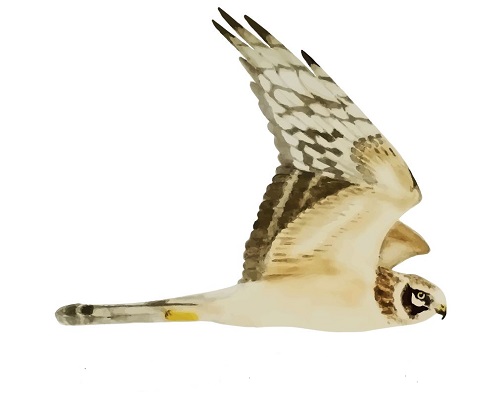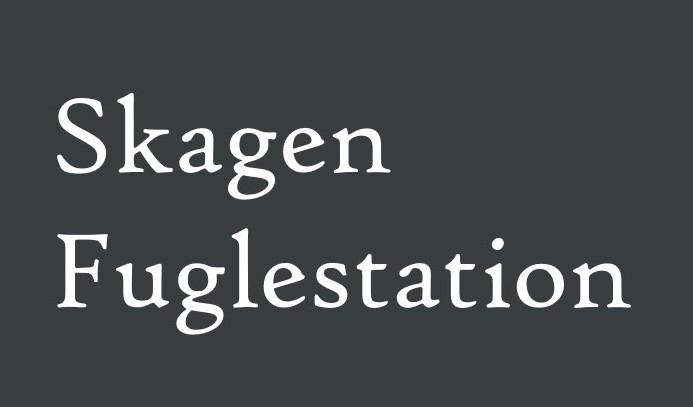Her på Skagen Fuglestations blog bringes korte nyheder i dagbogsformat om hændelser på fuglestationen.
The Great Snipe Adventure
Last night was an adventure as Me, Gustav, Simon and Hayley set off around 5:30pm yesterday evening to get the train to Størving from Skagen to go Great Snipe (Tredækker) catching. The train journey was 2.5 hours long, but it was nice as we got to see some really nice scenery. We got to Størving around 8.30pm and then walked for 10 minutes to meet Simon and Lisa at Simon’s dad’s house. Once we arrived at the house we sat down for some coffee and two slices of strawberry marzipan cake which was very tasty. We had to wait until it was dark enough before going to the nearby fields to catch Great Snipes (Tredækker).
We drove to the fields for 9:45pm and then got the net and ringing equipment sorted for measuring Great Snipes. We were very excited about the potential of catching one as it would be the first time most of us would have seen one up close. The weather was calm with lots of clouds; this was good as they covered the full moon enabling the sky to remain dark, and after two hours a mist formed over the fields. Simon and Lisa strategically walked the fields in search for the Great Snipes whilst the rest of us followed them slowly to prevent flushing of the Snipes. During the first 10 minutes of the first search Simon and Lisa almost caught a Great Snipe, however, this one unfortunately flew away before Lisa got the net over it, but it was still amazing to see one. Whilst the search continued a lovely Lapwing (Vibe) was calling above us which was nice to hear. As Simon and Lisa proceeded to search for Great Snipes, there were several Skylarks (Sanglaerke) and Common Snipe (Dobbeltbekkasin) on the fields which flew away when Simon pointed the flashlight over the field. As the night went on after several unsuccessful attempts at catching a Great Snipe (3 individuals overall) we finally caught one!! Yay!
Lisa carried the precious Great Snipe (Tredækker) over to where we set up the ringing equipment in Simon’s car boot. This species is a rather rare passage migrant in Denmark, so we all felt very lucky to see one up so close to look at the interesting feather patterns and long thick bill. They are slightly bigger and stockier in comparison to Common Snipe. Hayley got the privilege to ring this species, but it was a bit more challenging than the birds usually ringed at Kabeltromlen, as it was very round and stout, so Hayley had to hold the bird on its back as she ringed it in order to have more control, though, the bird was very calm. It was funny because this particular Great Snipe was given a fat score of 9 which is the highest any bird can score, it was such a solid and chubby one. Once the ring was successfully attached, Simon Jr. took the Great Snipe for the usual photoshoot in the light box to get photos of the whole body, wings, head, bill, legs and feet. Afterwards, the bird was passed along each of us so that we could all get the opportunity to hold it, then Gustav released it into the misty field as the moon brightly gleamed between an opening in the clouds making it a very special unforgettable moment. There were a couple of more attempts to get another one but we didn’t get any more, but that was okay as we were satisfied with just the one. What a GREAT night!


We then left about 1.30 am and got back to the station around 3 am and then went straight to sleep. In the afternoon me, Hayley, Simon and Antonia went to the harbour to do the Cormorant (Skarv) count which was nice as it was really sunny and warm. Then after we went to do some grocery shopping and returned to the station to do other tasks such as entering ringing data, updating the Dofbassen and planning at the evening meeting.
The guests cooked for us which was so kind of them, and it was absolutely delicious!!
Ringing Data From Today:
Volsted:
Great Snipe (Tredækker) 1
People: Hayley Land, Gustav Nyberg, Simon Kiesé, Rebecca Cheape, Antonia Greil, Simon S. Christiansen, Knud Pedersen, Lisa Vergin, Kim and Bodil.
A link to today's observations from volunteers and local observers.



